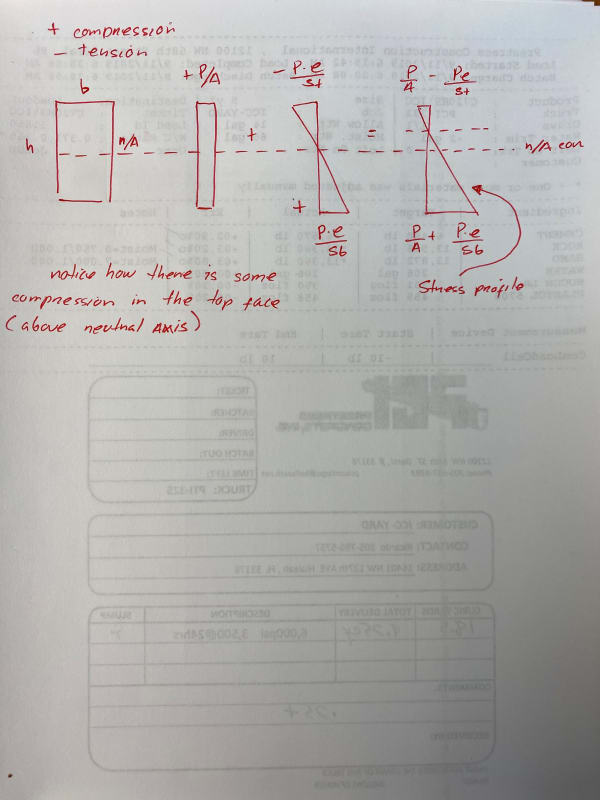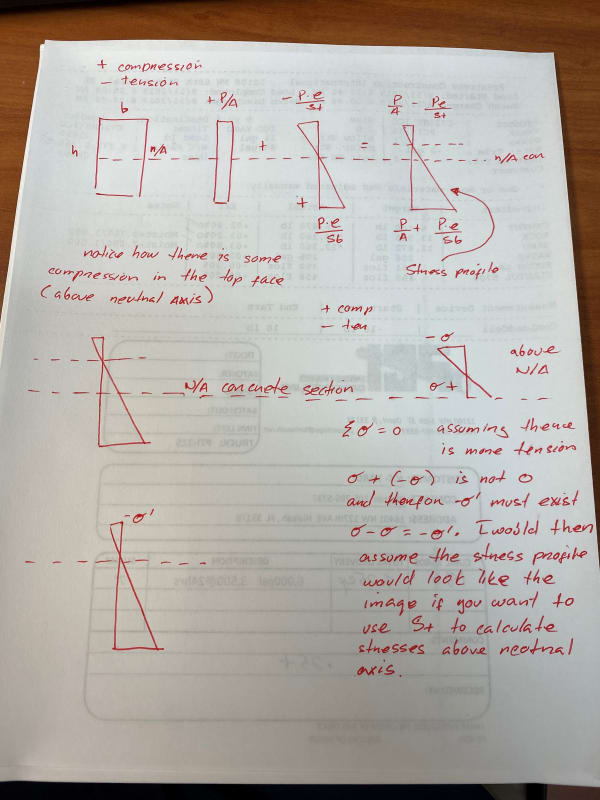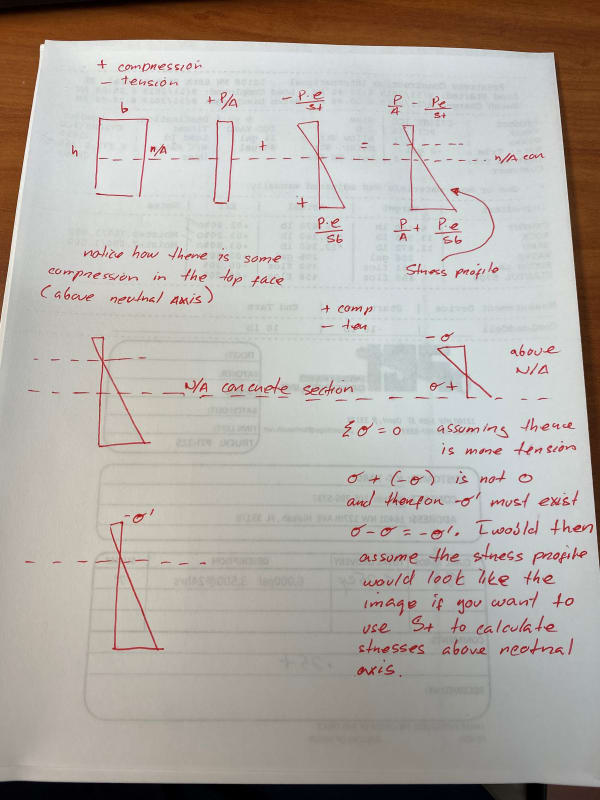marc.rogue
Structural
Hello, I am a recent graduate specializing in structural engineering. I didn't take a prestress course while in school but I have learned lots about the subject, I learned soo much that I actually created my own prestress design software. But something always bother me, When applying prestress to a section you are essentially providing extra compression to offset tension (over simplification of course ). I have noticed during my analysis that the neutral axis of the section meaning the concrete never matches with the stress profile, meaning my C distance from the top of the section of concrete isn't the same as the C of the stress profile. My question is, the section must remain in static equilibrium and when looking at the section specially when there are large tensile or compressive stresses the tension or compressive side of the stress profile will go above or below the neutral axis of the section, Does this mean the top or bot of the section is experiencing a net deduction of stress above or below the neutral axis if the stress profile penetrates either way. I know the forces are in balance when interacting together concrete and steel, but if the concrete is experiencing that sort of stress profile does it mean my actual stress above or below is less than the actual result or that the concrete is experiencing compression above the neutral axis. I know at the neutral axis the stress must be zero.
Thanks for any insight into this

Thanks for any insight into this



